Our outdoor activities might have become very restricted with the latest lockdown, but one thing we can still enjoy is feeding the birds and seeing how many different types visit our garden. We’re looking forward to taking part in this year’s Big Garden Birdwatch at the end of January and seeing how many different birds we can spot over an hour.

Before the first lockdown last year, I could only identify a handful of the birds that visited the garden. I could recognise blue tits, robins, blackbirds and magpies but not many others. Since we’ve started feeding the birds regularly, we’ve seen many more different types of birds and are slowly getting better at recognising more of them.
The RSPB has a printable ID sheet on their website which we will use to record which birds we spot during the Big Garden Birdwatch. This is the world’s largest bird survey and helps the RSPB collect data to understand the challenges facing garden birds, particularly with declining levels of some types of birds. Taking part is easy – you simply set aside an hour at any point between 29th and 31st January and record which types of birds you spot in your garden. You can find more details of how to take part here.
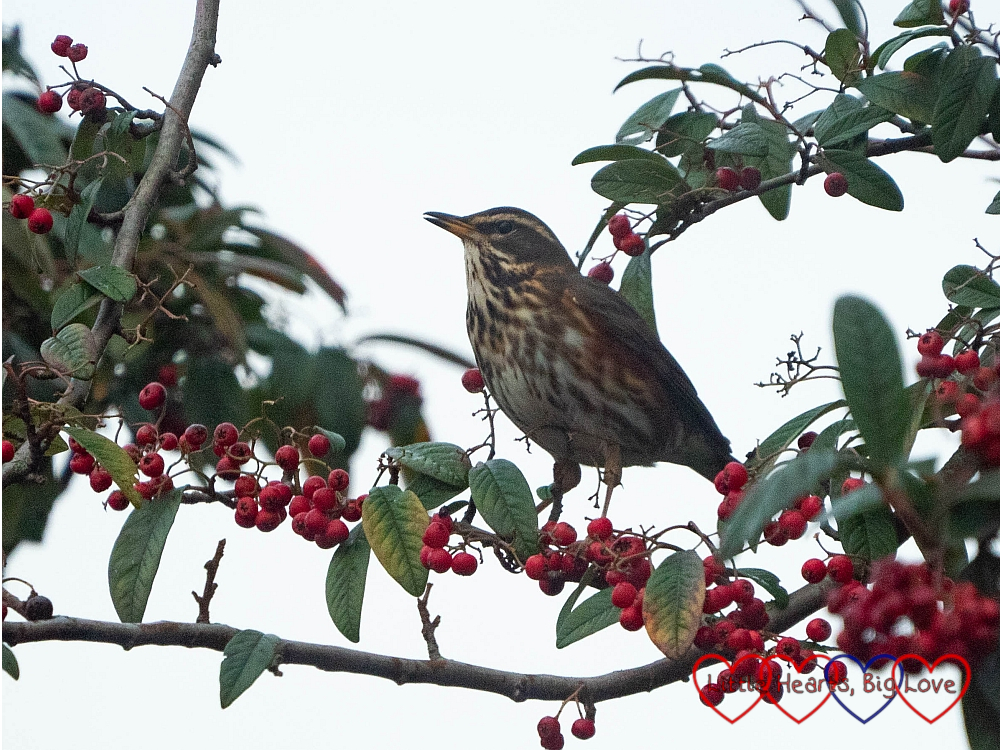
Even if you don’t spot any birds during that hour, it’s still important to share your findings. It’s still useful to know which birds aren’t visiting your area. Last year we didn’t spot many birds in our garden. Since then, we’ve been trying to encourage the birds to visit our garden by putting out food for them.
We have a few different types of bird feeder in the garden. There’s a ground feeder tray which we use for mealworms. We’ve seen robins, blackbirds, magpies and starlings feeding from this one. The fat ball feeder is a favourite with the blue tits. It was the most popular feeder in the autumn but has been less popular over the winter. The seed feeder is currently the favourite with our garden birds. It seems to mostly attract greenfinches at the moment. We also make sure that there is fresh water in the bird bath.
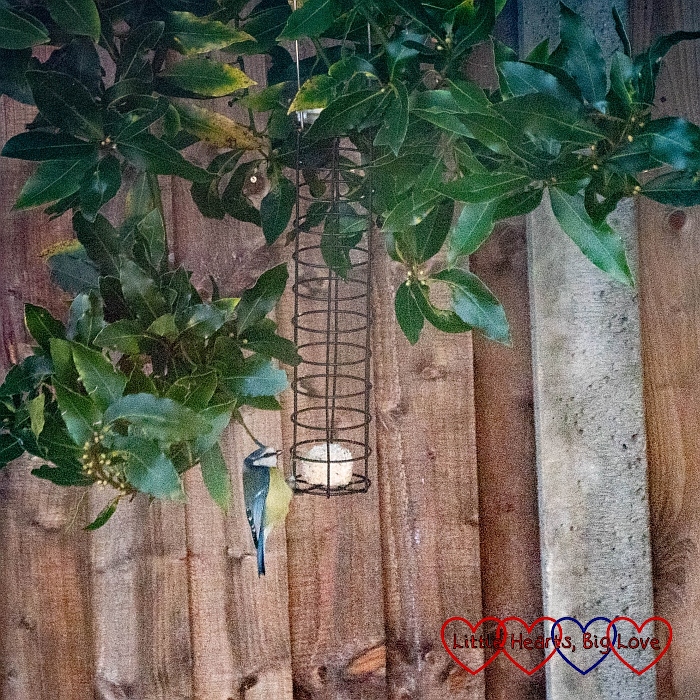
The amount of food we put out varies depending on how much the birds are eating. The ground feeders can attract vermin; any food put out in these should be eaten or disposed of by nightfall. The seeds are currently the favourite at the moment, so we’re putting a lot of seed out. We have reduced the amount of fat balls though as these aren’t being eaten as quickly.
During the spring and summer months, only certain types of bird food should be put out as some food, such as loose peanuts, dry hard food or large chunks of bread, may be harmful to chicks. You should also avoid putting out home-made fat balls in the warmer months as they can go rancid very quickly.
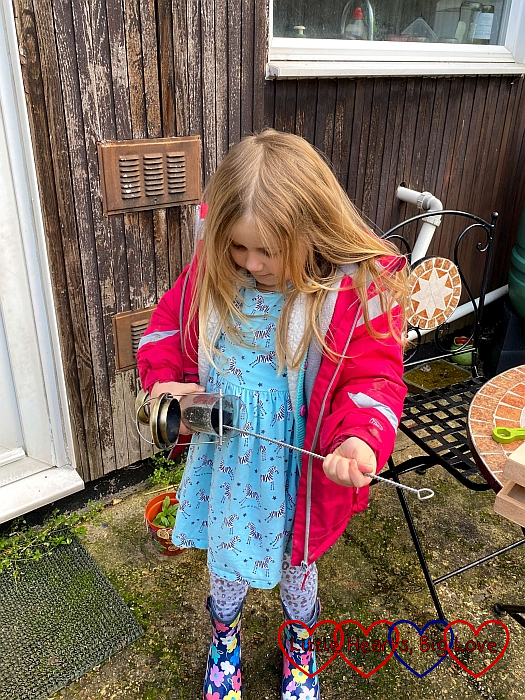
It’s important to clean the bird feeders and bird bath regularly to prevent transmission of infection. We also use a special disinfectant spray to help reduce the risk of making the birds ill. You should also move the feeders to a new place each month to prevent droppings accumulating underneath as most infections are transmitted through droppings.
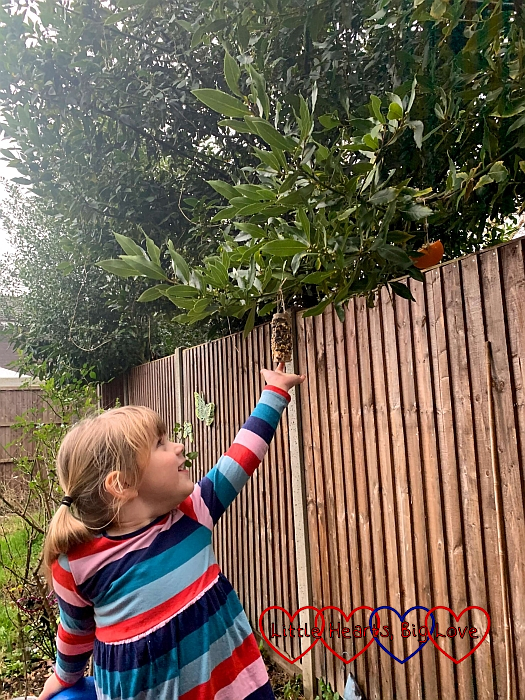
Every so often we add some home-made treats too. Sophie enjoys making bird feeders from toilet roll tubes with peanut butter and bird seed. We’ve also made bird feeders by filling halved oranges (after scooping out and eating the fruit!) with suet and seeds.
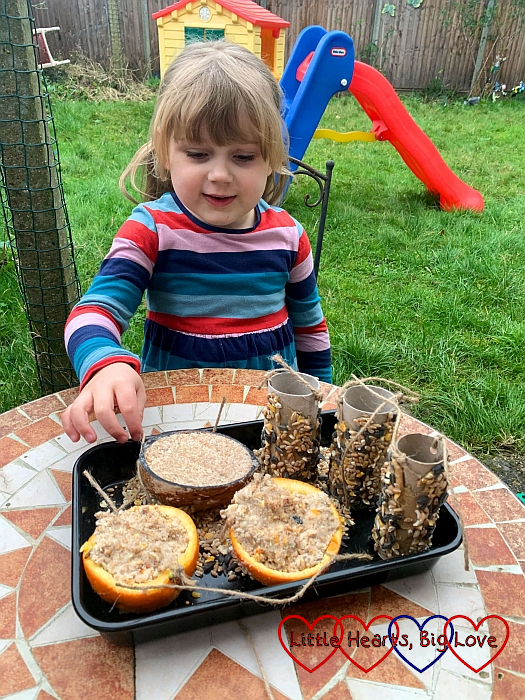
Sitting in the garden and seeing how many different types of birds we can spot is a great learning activity. Sophie likes to use her i-Spy Garden Birds book to help her identify the different types of birds. We also enjoy listening to the birds and seeing if we can recognise any of them by their song. The RSPB website has a bird song ID playlist covering some of the more common garden birds. I also have an app on my phone which helps identify the birds by their song.
Hopefully our efforts to encourage the birds into our garden this year have paid off and we’ll spot a few more birds when we take part in this year’s Big Garden Birdwatch than we did last year.
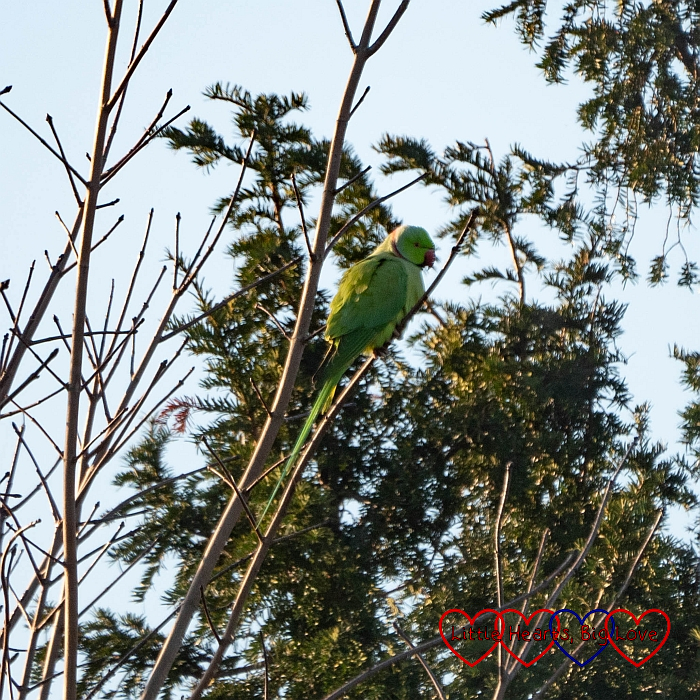

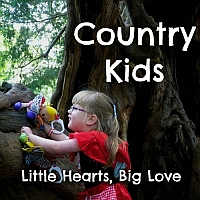

What a lovely way to spend time with your children. Sadly we have very few birds in our very urban neighbourhood, but lots of cats to scare any we do have away. We have hung out bird feeders in the past but had no takers. I usually wait until we visit my dad’s house in the country. He is a keen bird watcher and great at sharing his knowledge with his grandchildren. He even gets woodpeckers! #CountryKids
I can see how lots of cats would be off-putting for the birds. How lovely that your dad gets woodpeckers in his garden and shares his bird-watching knowledge.
Happy new year Louise. My goodness how Sophie is growing! And this is a great reminder to put an ad for the birdwatch on my KOTW Facebook page. Great post, lots of useful info, and where did you see the parakeet?? Fab photo. And a huge well done for keeping the #CountryKids linky afloat! xx
Thanks Lucy, happy new year to you too. The parakeet was in the tree at the end of my garden and thankfully I had my camera to hand to get a photo!
We enjoy seeing lots of different birds in our garden and hear an owl every night, but have never seen it. Great picture of the parakeet. #CountryKids
Thank you. How lovely to hear an owl in your garden.